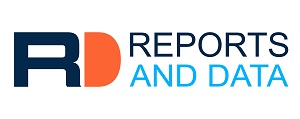Silk Thread Trap Market to Reach USD 280 Million by 2034, Driven by Sustainability and Medical Advancements

Reports And Data
Silk Thread Trap Market is set for steady expansion, projected to grow from USD 120 million in 2024 to USD 280 million by 2034
VANCOUVER, BRITISH COLUMBIA, CANADA, August 20, 2025 /EINPresswire.com/ -- The global Silk Thread Trap Market is set for steady expansion, projected to grow from USD 120 million in 2024 to USD 280 million by 2034, at a compound annual growth rate (CAGR) of 7.2%. Growth is being fueled by rising demand for sustainable and eco-friendly materials, alongside innovations in silk processing technologies that are broadening its applications across multiple industries.The textile industry remains the largest user of silk threads, driven by their superior quality and appeal in sustainable fashion. However, the fastest-growing sector is medical applications, where silk’s natural biocompatibility and strength make it increasingly important for sutures, tissue engineering, and other healthcare uses. Approvals by regulators such as the U.S. Food and Drug Administration (FDA) have accelerated the adoption of silk-based medical products, with the World Health Organization forecasting annual growth of over 20% in demand for biocompatible materials.
Get Free Sample PDF Copy Of This Report At: https://www.reportsanddata.com/download-free-sample/00691
Asia Pacific is expected to dominate regional growth due to its strong textile manufacturing base and growing investments in sustainable material production. Meanwhile, Europe and North America are also seeing rising demand, supported by regulatory reforms such as the European Union’s Green Deal and growing consumer interest in eco-friendly alternatives.
Key Market Drivers
The push toward sustainability is the primary driver of growth. According to McKinsey & Company, demand for sustainable materials worldwide is growing by 30% annually. Silk threads, which are naturally biodegradable, are increasingly recognized as a viable alternative to synthetic fibers. At the same time, technological advancements in bioengineering have led to the creation of stronger, more versatile silk threads that can be used in advanced medical and industrial settings. Leading companies such as AMSilk GmbH, Bolt Threads, and Spiber Inc. are playing a central role by launching new silk-based product lines in both fashion and healthcare.
Top 10 Companies
AMSilk GmbH
Bolt Threads
Spiber Inc.
Kraig Biocraft Laboratories
Eri Silk Co.
Silk Therapeutics
EntoGenetics Inc.
Sericulture Innovations
SilkTech Biopharmaceuticals
Silk Road Fibers
Market Challenges
Despite the positive outlook, the industry faces hurdles. Regulatory approval for new silk-based medical products can be costly and time-consuming, creating barriers to faster adoption. Technical challenges in producing bioengineered silk add to the cost, with Deloitte estimating production costs at roughly 25% higher than traditional materials. Additionally, reliance on sericulture makes supply vulnerable to environmental factors like climate change and disease outbreaks, which the World Bank warns could reduce silk production by up to 15% annually. Competition from cheaper synthetic alternatives also remains a challenge, particularly in price-sensitive industries.
Segmentation Insights
By product type, natural silk threads hold the largest share, valued at USD 60 million in 2024 and expected to grow to USD 140 million by 2034. Their dominance stems from long-standing use in textiles and rising demand for eco-friendly fabrics. Bioengineered silk threads, however, represent the fastest-growing category with an expected CAGR of 8.5%, reaching USD 100 million by 2034. Their growth is tied to advancements in bioengineering and expanding use in healthcare. Synthetic silk threads, though more affordable, are forecasted to see slower growth due to sustainability concerns.
By application, textiles remain the largest segment, projected to expand from USD 50 million in 2024 to USD 120 million by 2034, driven by demand from fashion brands embracing sustainability. Medical sutures, however, represent the fastest-growing application, set to reach USD 90 million by 2034 at a CAGR of 8.0%. Industrial uses, such as high-strength materials, and cosmetics, where silk proteins are used in skincare, are also contributing steadily to growth.
Silk Thread Trap Market Segmentation
By Product Type
Natural Silk Threads
Bioengineered Silk Threads
Synthetic Silk Threads
By Application
Textiles
Medical Sutures
Industrial Materials
Cosmetics
By End User
Textile Manufacturers
Healthcare Providers
Industrial Manufacturers
Cosmetic Companies
By Technology
Traditional Sericulture
Bioengineering
Synthetic Production
By Distribution Channel
Direct Sales
Online Retail
Specialty Stores
Request customization on the report @ https://www.reportsanddata.com/request-customization-form/00691
Outlook
The Silk Thread Trap Market is at the intersection of sustainability and innovation. Rising consumer demand for eco-friendly products, regulatory support for sustainable materials, and breakthroughs in silk bioengineering are laying the foundation for significant growth in the coming decade. While cost and regulatory hurdles remain, industry leaders are investing heavily in research and development to overcome these barriers. With strong growth expected across textiles and healthcare, silk threads are positioned to become a key material of the future, blending tradition with cutting-edge science.
John W
Reports and Data
+1 2127101370
email us here
Legal Disclaimer:
EIN Presswire provides this news content "as is" without warranty of any kind. We do not accept any responsibility or liability for the accuracy, content, images, videos, licenses, completeness, legality, or reliability of the information contained in this article. If you have any complaints or copyright issues related to this article, kindly contact the author above.
Artificial Intelligence in Cybersecurity Market Set to Transform Threat Detection and Risk Management
Rising Vehicle Software Integration Drives Automotive OS Market to USD 20.4 Billion by 2032
CAGR of 3.5% | Alpaca Fiber Market Size, 2025 | Growing Demand and Business Outlook by 2031
Więcej ważnych informacji
 Jedynka Newserii
Jedynka Newserii

 Jedynka Newserii
Jedynka Newserii

Prawo

Kolejne polskie miasta chcą być przyjazne dzieciom. Planują stworzyć najmłodszym dobre warunki do rozwoju
Cztery miasta w Polsce posiadają tytuł Miasta Przyjaznego Dzieciom nadany przez UNICEF Polska. Dziewięć kolejnych miast czeka na certyfikację, a w ostatnich miesiącach do programu zgłosiło się kilka następnych. Na całym świecie inicjatywa została przyjęta już w ponad 4 tys. samorządów, a w Hiszpanii objęła połowę dziecięcej populacji miast. Program UNICEF-u ma na celu zachęcenie włodarzy do traktowania najmłodszych obywateli w sposób podmiotowy, respektowania ich praw i zaproszenia ich do współdecydowania o przyszłości.
Przemysł
W ciągu roku w Polsce ubyło 500 przedsiębiorstw odzieżowo-tekstylnych. Problemem są spadki zamówień z Europy Zachodniej i wzrost kosztów

Wartość rynku odzieżowego w Polsce wynosi 66,9 mld zł, z czego 10 mld zł to wartość krajowej produkcji – wynika z danych PIOT. Od czasu pandemii branża mierzy się z szeregiem wyzwań, wśród których najpoważniejsze to wzrost kosztów pracy i produkcji, przerwane łańcuchy dostaw i spadek zamówień – zarówno w kraju, jak i za granicą, a także wzrost nieuczciwej konkurencji na rynku, czyli głównie importu z Chin. Skala wyzwań sprawia, że w ubiegłym roku z rynku zniknęło 500 firm. Producenci odzieży apelują do rządu o wsparcie.
Handel
D. Obajtek: Orlen powinien być o 30–40 proc. większą spółką. Byłoby to z korzyścią dla konsumentów

Orlen jest największym polskim przedsiębiorstwem. Jego przychody ze sprzedaży w 2024 roku wyniosły blisko 295 mln zł, a rok wcześniej – ponad 372 mln – wynika z raportu Rzeczpospolitej „Lista 500”. W ubiegłorocznym rankingu Fortune 500 uwzględniającym największe korporacje znalazł się na 216. miejscu na świecie i 44. w Europie. Według Daniela Obajtka, europosła PiS-u i byłego prezesa Orlenu, spółka powinna jeszcze urosnąć, tym samym gwarantując konsumentom szereg korzyści, a także przyspieszać inwestycje m.in. w obszarze petrochemii i energetyki zero- oraz niskoemisyjnej.
Partner serwisu
Szkolenia

Akademia Newserii
Akademia Newserii to projekt, w ramach którego najlepsi polscy dziennikarze biznesowi, giełdowi oraz lifestylowi, a także szkoleniowcy z wieloletnim doświadczeniem dzielą się swoją wiedzą nt. pracy z mediami.








.gif)

 |
| |
| |
|